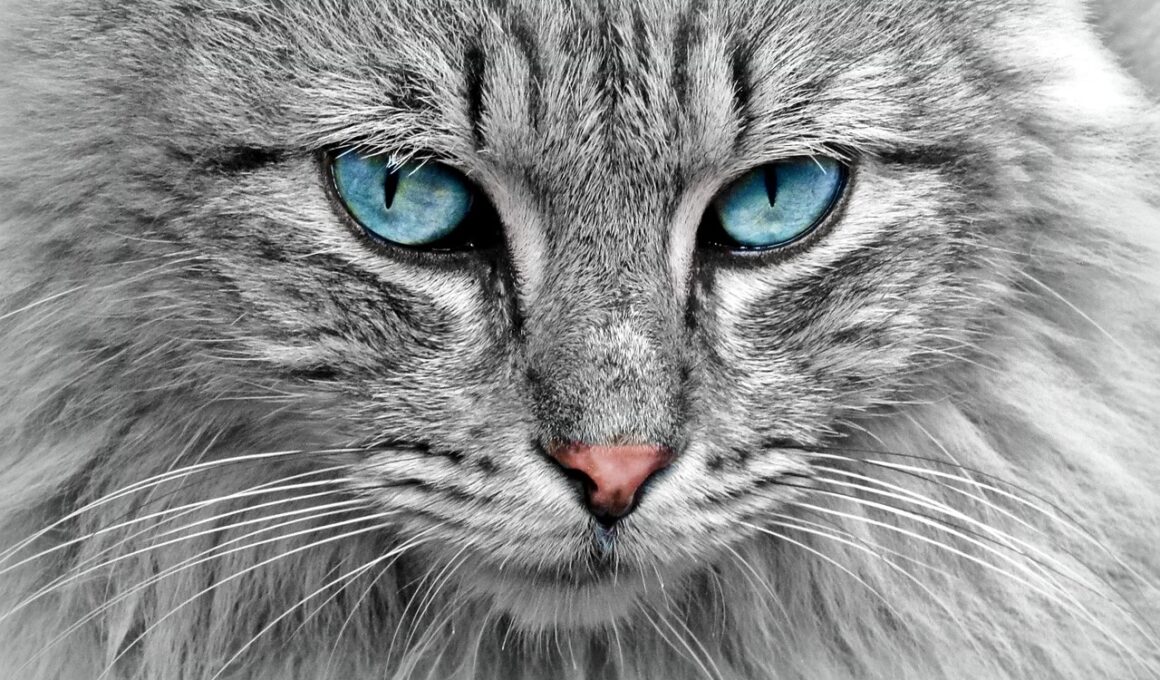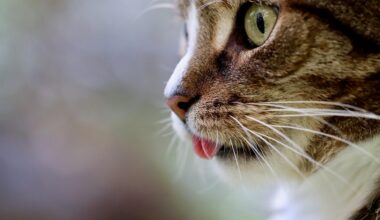Behavioral Standards for Cats in Competitions
Participating in cat shows involves understanding various rules and regulations, particularly behavioral standards crucial for fair competition. Exhibitors must ensure their cats are well-prepared for these events. A cat’s temperament can significantly affect its performance, showcasing aspects such as agility, socialization, and overall health. Judges pay close attention to a cat’s behavior during the competition, assessing its ability to interact with the environment and other competitors. To better understand this context, exhibitors should familiarize themselves with certain key behaviors expected during the event. Some common expectations include calmness when being handled, responsiveness to commands, and a social demeanor. Cat owners are encouraged to train their pets, which includes regular socialization with other animals and people, to help mitigate stressors commonly encountered during shows. Additionally, it’s essential for cats to exhibit good grooming habits, as visual appeal is paramount in competitions. By adhering to these behavioral expectations, exhibitors not only enhance their cats’ experience but also increase their chances of success in these competitive arenas. It’s beneficial to observe previous shows to identify effective behaviors that have yielded positive outcomes for competitors.
One of the critical behavioral aspects judged in cat shows is how well cats present themselves on the judging table. A confident feline is more likely to attract the judges’ attention favorably. Exhibitors should train their cats to stand upright, allowing easy observation of their body structure and markings. Moreover, judges appreciate cats that maintain composure under potential stressors, demonstrating their adaptability. When preparing for shows, cat owners should develop routines that help familiarize their pets with the judging process. This includes getting them used to being handled by unfamiliar people and being placed in various postures. It’s also helpful to simulate a show environment at home. Exhibitors can enhance their cats’ performance by introducing distractions and assessing their reactions. Cats should be comfortable with being examined for grooming standards; thus, daily grooming practices can prove beneficial. Exhibitors should make sure their cats are bathed and well-groomed ahead of the competition to meet hygiene rules effectively. Presenting a well-groomed cat not only boosts the cat’s aesthetic appeal but also reflects the care that the exhibitor takes in maintaining their feline companions for the competitive circuit.
Socialization and Interaction
Another vital aspect of behavioral standards in cat shows is socialization. Cats that are accustomed to different environments, people, and sounds generally perform better during competitions. Socializing should begin as early as possible to cultivate a well-adjusted adult cat. Exhibitors are encouraged to expose their cats to different situations, such as public places, which can lessen anxiety when presented in an actual show scenario. Engaging with both humans and other cats while in a safe space lays the foundation for successful social skills. Training sessions can incorporate playdates with other cat owners, allowing for peer interaction, which helps the cat adapt to crowded environments like show venues. Exhibitors should also familiarize their cats with various types of stimuli, such as camera flashes, loud noises, and other pets. By creating a positive association with these experiences, the likelihood of displaying desirable behavior during competition increases dramatically. Proper socialization reassures the cat, minimizing stress and promoting overall confidence. Mental stimulation through toys and challenges also supports healthy behavioral patterns that encourage cats to shine in competitions.
Grooming practices serve as a significant element in the preparation for cat shows, tying directly into behavioral standards. A cat must not only look its best but also feel comfortable, which can greatly influence its behavior. Regular grooming routines involve brushing, bathing, and nail trimming, aimed at reducing stress for both cats and their owners. Many exhibitors find that a well-groomed cat is more tolerant of handling, ultimately resulting in a more favorable impression on judges. Training cats to enjoy grooming sessions can foster positive experiences. Using treats and gentle methods helps form an association between grooming and rewards, effectively encouraging cooperative behavior. Additionally, exhibitors should prioritize maintaining the cat’s litter box hygiene, as this reflects on the overall care and responsibility of the owner. In competitions, an unhygienic cat may signify neglect, leading to unfavorable judgments. Therefore, maintaining proper grooming directly correlates with how a cat behaves during the event. Incorporating consistent grooming habits leads to healthier pets that not only look great but also exude confidence, impacting their performance positively on the competition floor.
Handling Techniques
A notable aspect of cat shows is how exhibitors handle their pets while presenting them to judges. Proper handling techniques greatly influence a cat’s behavior during evaluations. To ensure a positive experience, owners must be gentle yet assertive, allowing the cat to feel safe while still showcasing its best traits. One effective method is using a calm, soothing voice to reassure the cat during examinations. Additionally, it’s key to support the cat firmly without being harsh, especially when moving it on and off the judging table. Cats that are comfortable during handling are more likely to exhibit positive behaviors, thereby drawing the judges’ attention favorably. Owners should practice transferring their cats from their cages to the judging areas to ensure smooth transitions. Providing constant rewards during practice can also reinforce good behavior and comfort. Moreover, understanding each cat’s unique temperament is essential; some may prefer more handling than others. Tailoring handling techniques to the individual cat’s comfort level enables a better performance overall. Observing and learning from experienced exhibitors can also provide valuable insights into effective handling strategies that promote optimal behavior.
The mental health and well-being of a competing cat should not be underestimated, as it directly impacts performance during shows. Anxiety or stress can manifest as undesirable behaviors, like excessive meowing or aggression. Thus, creating a relaxing atmosphere at home is crucial for performance in cat competitions. Exhibitors must consider their cats’ environmental needs; having safe, cozy retreats at home encourages relaxation. Regular playtime and interaction can also alleviate stress, providing mental stimulation and entertainment. Prior to shows, owners should keep a consistent routine to minimize sudden changes that could spook their pets. During transport to the competition venue, singing softly or talking to the cat can also soothe nerves. Infusing the transportation carrier with familiar items, such as toys and blankets, may help them stay calm. Maintaining hydration and providing nutritious meals is equally vital as adequate nutrition supports optimal well-being. Exhibitors must prioritize their cats’ comfort, as this practice contributes to favorable behavior during competitions. Ultimately, recognizing and catering to a cat’s mental health needs can lead to a more successful performance, both in judging and overall experience.
Conclusion
In conclusion, understanding behavioral standards for cats in competitions is fundamental for both exhibitors and their feline companions. From proper socialization to grooming and handling practices, each aspect plays a significant role in shaping a cat’s behavior during shows. Well-trained cats demonstrating positive behaviors will not only attract judges’ attention but also experience less stress. By investing time into regular training sessions and establishing a strong bond with their pets, owners can contribute to a successful showing. Ultimately, every step taken in adherence to these standards ensures a rewarding experience for both the cat and the exhibitor. Observing the behavioral traits of other competitors can also provide valuable insight into effective practices. Moreover, creating an enjoyable environment where cats feel secure and valued is paramount. As the popularity of cat shows continues to rise, understanding the nuances of competition behavior becomes even more critical. By approaching competitions with a clear focus on behavioral standards, exhibitors can promote not only the well-being of their feline friends but also enhance their chances for success in the vibrant world of cat shows.


